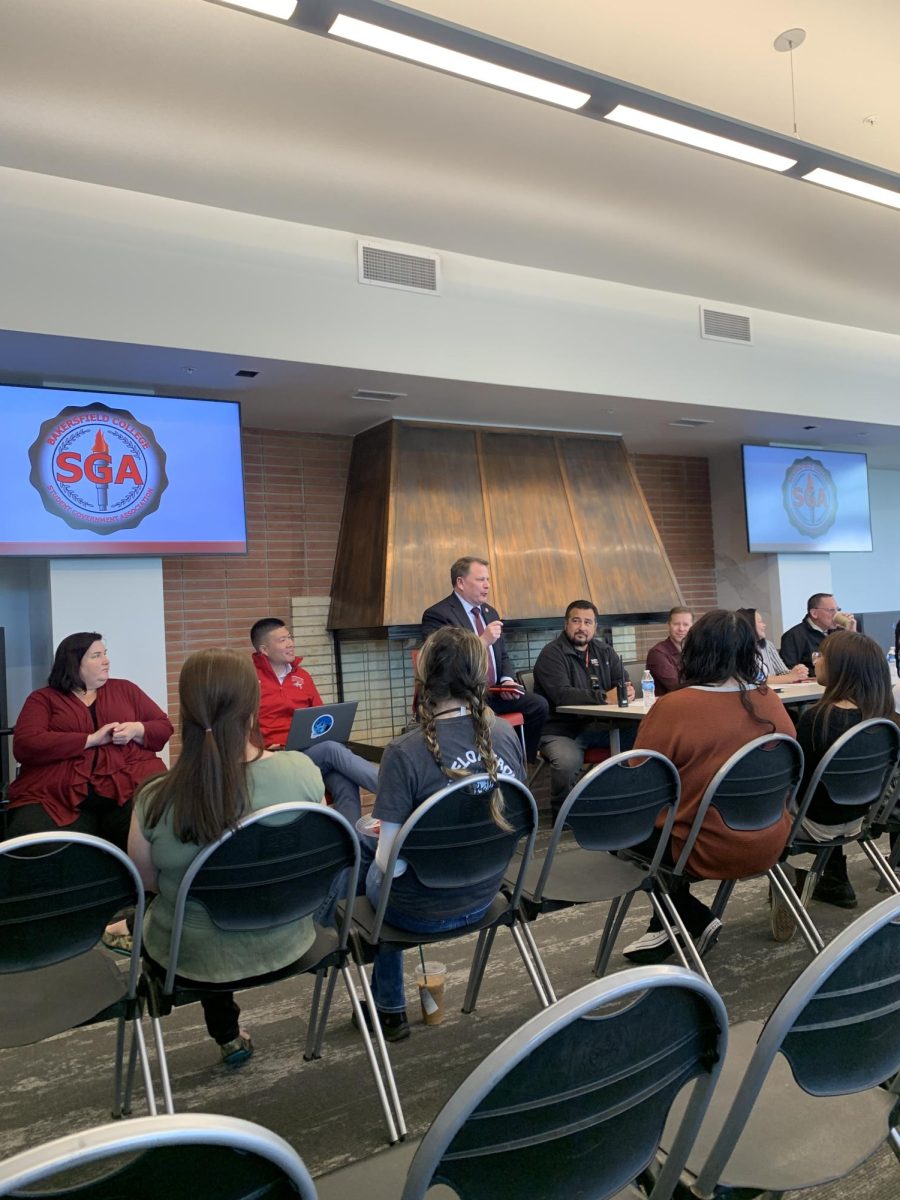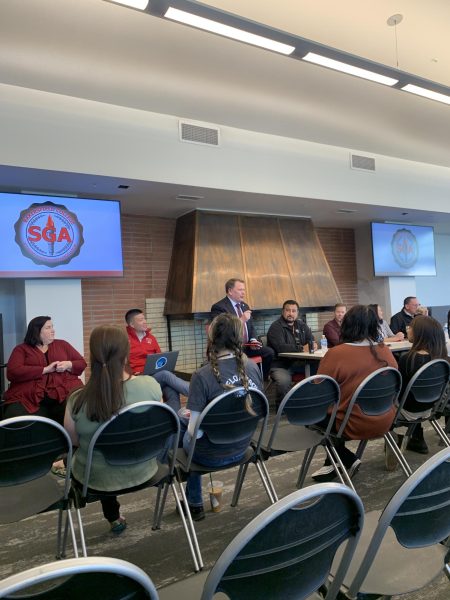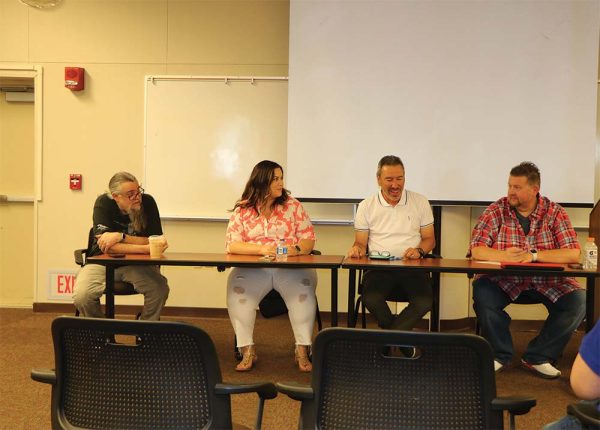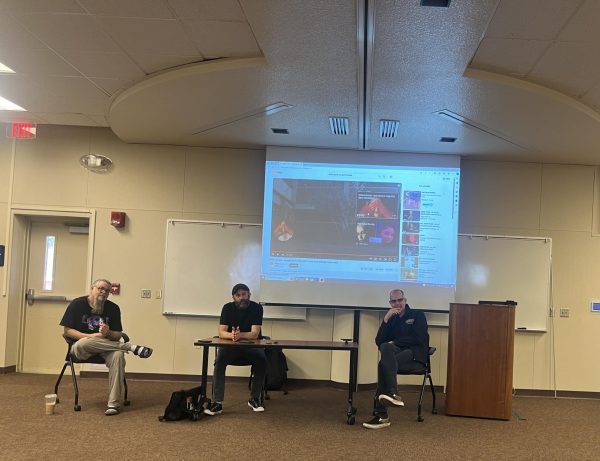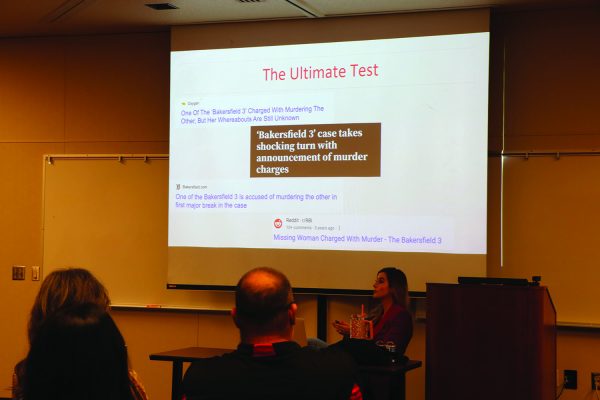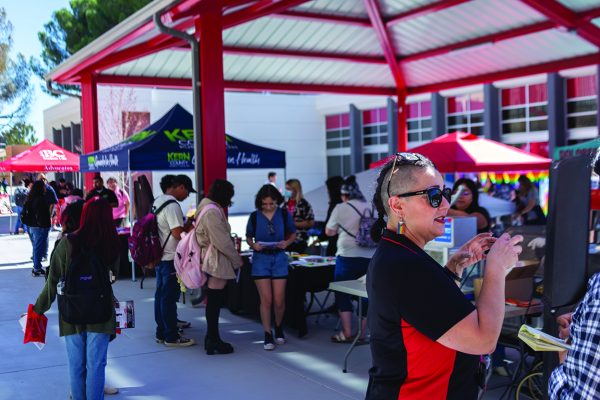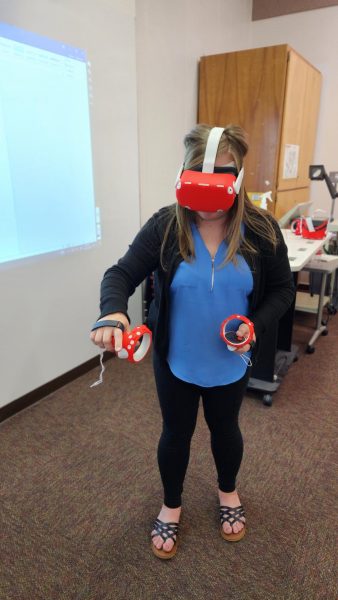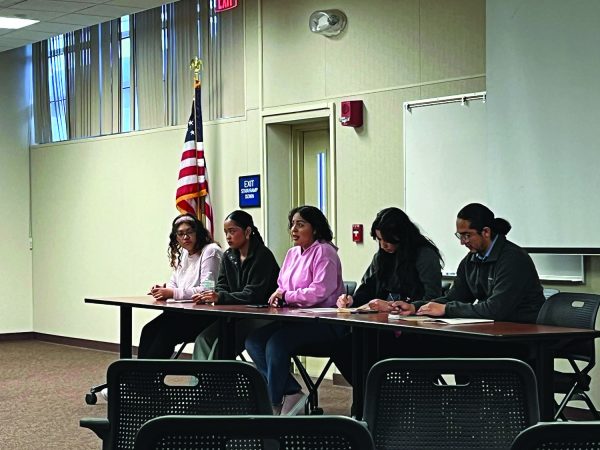Faculty members discuss a book at BC
November 4, 2015
Faculty members gathered for a book discussion on different ways to help redesign community colleges. The discussion was held in the Fireside Room Oct. 26, to talk about one of the six chapters from the book hosted by four faculty panelists.
The authors Bailey, Jaguars and Jenkins, from the Community College Research Center in Columbia, published a book called “Guided Pathways.” The book is based on creative ways to help guide community college students with programs, rethinking instruction, helping the underprepared students, engaging both student and faculty, and the economics of college redesign.
Mark Staller, chair of the communications department, focused on roles of the adjunct faculty. The time commitment for the adjunct faculty is difficult because they have to travel from institution to institution and don’t get paid many hours for being on campus.
He said that a lot of adjuncts are spending lots of time on the road taking jobs that are not near their home.
“I would say 25 percent of our adjuncts are not in the area. They have to travel up from Los Angeles, so as the department chair I’m trying to get a schedule that would work for them,” said Staller.
In the communications field alone, not all the adjuncts are completely active on campus besides teaching their class, compared to the few that are involved. The book discusses getting the adjunct faculty and staff involved, but Staller questioned if there was a level of amount of involvement, since the classified staff is busy with their full-time jobs.
Edie Nelson, admissions and records classified staff, shared how she was hesitant to get involved in council because she didn’t know much about it and had to make sure it worked with her schedule.
When she spoke to other classified people and asked why they weren’t more involved, they all had the same answer of not having enough time or saying their opinions wouldn’t matter. Nelson would like to see staff get more involved in student bases, but says often times it takes people who are really interested to get a push to join.
She said, “The only way to get classified is to have management directors, somebody who knows them, knows their strong points and push them gently to get involved.”
Kate Pluta, BC English professor, spoke on cross-functional teams in the book as working together and building a relationship of trust between divisions. She explained that cross-functional teams are different from standing committees they have a focus on a certain situation and then they’re done. Bringing the committee and college together can help make a difference by being creative for students and helping meet their needs.
She said, “It’s important that people get involved to work as a team because it helps explore ideas, work through disagreements and come to a decision.”
Manny Mourtzanos, dean of instruction, expressed that it is important to invest in peers and colleagues. By asking people around you to do more, you are asking them put in all their effort into things they believe in. You have to invest in things that you feel make a difference in lives.
Sometimes people are interested in things such as committees, but don’t feel they can make a difference until their colleagues mention it to them.
He said, “We have individuals that are ready to get in the game and just need a tap on the shoulders to get to it.”
He asks that the individuals, who go to work for just their one job, to join a committee so that they bring a good reflection back. In order to make a difference you have to step up and engage in any issue that should be managed before it’s too late to deal with.


